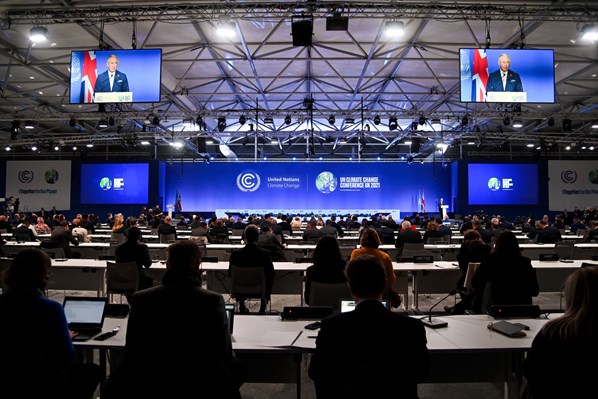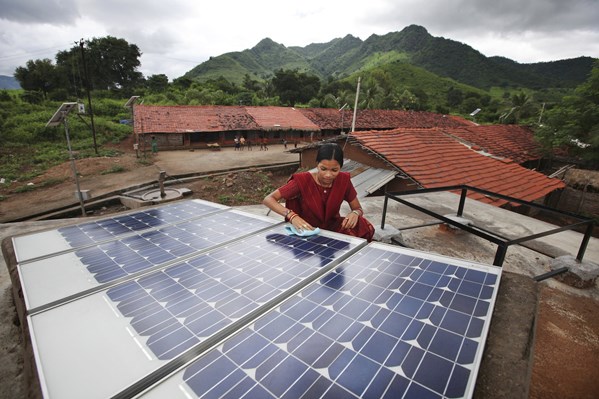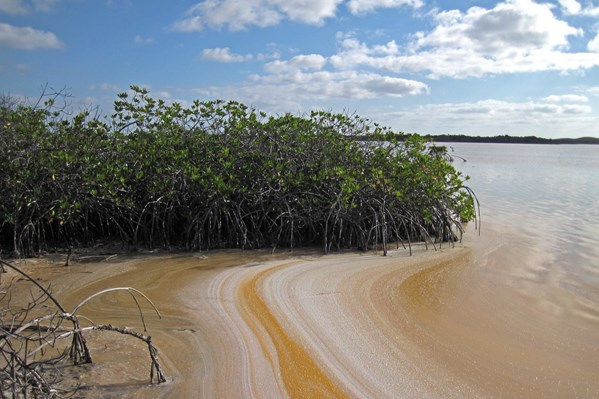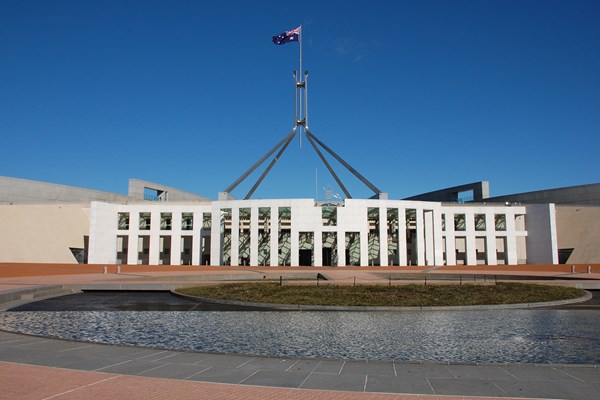From COP26 to COP27: 4 climate laws passed in the last year
Co-authored by the CPA Headquarters and policy experts at the Grantham Research Institute at the London School of Economics (GRI LSE)
In November 2021, with the world falling behind in the race to limit global temperature increases to 1.5 °C, the Glasgow Climate Pact agreed at COP26 stressed ‘the urgency of enhancing ambition and action’ during a ‘critical decade’ of the climate crisis. The Pact called on countries to accelerate climate action by revisiting and strengthening targets in their national climate action plans by the end of 2022.
Yet one year on, as world leaders and climate experts descend on Sharm-el-Sheikh, Egypt, for COP27, the latest Emissions Gap Report by the UN Environment Programme (UNEP) shows that updated national pledges since COP26 ‘make a negligible difference to predicted 2030 emissions.’
In the context of this damning verdict on post-COP26 progress at the international level, this article reviews developments in climate legislation since COP26, analysing new laws advanced in four Commonwealth countries: India, The Bahamas, Australia and Nigeria.
Using information from the Climate Change Laws of the World database, policy experts from the Grantham Research Institute assess the impact of these developments in domestic climate legislation, explaining how parliamentary action at the national level can help to drive urgently needed change at an international level.
The case studies show how Parliaments have made valuable progress by setting emissions reduction targets into law, strengthening climate governance and institutionalising carbon trading mechanisms.
However, questions remain over whether adaptation, resilience and community empowerment components within the legislation are strong enough to bring about the 'rapid and systemic transformation’ required to achieve the goals of the 2015 Paris Agreement and avoid a climate disaster.

A year after the Glasgow Climate Pact was agreed at COP26, this year's summit will once again bring together world leaders and climate experts to take action towards achieving the goals set out in the 2015 Paris Agreement.
India
New energy legislation seeks to create a domestic carbon market
The Energy Conservation (Amendment) Bill 2022 was passed by the Lok Sabha, the lower house of the Parliament of India, in August 2022. The Bill is yet to be debated in the Rajya Sabha (upper house).
The Bill, which amends the Energy Conservation Act 2001, includes provisions that seek to:
- Mandate use of non-fossil energy sources, including green hydrogen, green ammonia, biomass and ethanol, to promote a faster transition to renewable energy.
- Introduce a domestic carbon market, making it easier to finance renewable energy projects through carbon credit trading.
- Enhance the scope of the energy conservation building code and regulate energy use in large residential buildings.
- Increase the number of members in the Governing Council of the Bureau of Energy Efficiency, adding Ministers responsible for sectors including transport, housing, environment and steel.
Introducing the Bill, Hon. R. K. Singh, Minister of New and Renewable Energy, said: ‘we have decided to not export our carbon credits ... We want to create our own carbon credit markets so that we can ensure more investments in the clean energy sector in our country alone.’
Whilst the Bill itself does not mention a ban on exporting credits, it does begin to build the framework for a domestic market by empowering the ‘central government or any agency authorised by it’ to issue carbon credit certificates. It also seeks to update existing mechanisms related to the trading of energy efficiency and renewable energy certificates.
Key terms: Carbon credits, offsets and carbon pricing
Carbon credits are rights to pollute issued by governments or supranational organisations and allocated to companies or individuals. Private entities can buy and sell credits through specific programmes.
A carbon offset is a form of certificate issued by projects that mitigate greenhouse gas emissions, such as reforestation initiatives. Companies or individuals can purchase these offsets to compensate for greenhouse gas emissions that they have produced. Offsets can be bought within the context of voluntary schemes. They also offer a solution for entities that exceed their allocated credits.
Carbon credits and offsets are one market mechanism to reduce emissions. However, other forms of carbon pricing, which aims to make polluters pay for their emissions, do exist. These include carbon taxes and climate finance tools.

"Local climates, global impacts" by DFID - UK Department for International Development (licensed under CC BY-NC-ND 2.0)
Expert view: A step forward on carbon pricing mechanisms with key implications for international trade

By Arnaud Koehl, Research Assistant, LSE Grantham Institute
There are now around 50 countries in the world that have passed climate change framework laws. However, despite domestic discussion, India has yet to do so. Without such overarching legislation, India is nonetheless taking steps to incrementally amend sectoral legislation in order to progress on climate policy and prove its seriousness on its 2070 net zero target ahead of COP27.
India notably needs to use a variety of governance, normative and market instruments to kick in decarbonisation pathways in the short term. In that regard, this Bill is welcome as it includes a strong mix of measures that should help address affordability and access to clean energy.
The Bill develops the market regulation framework that will help make low-carbon behaviours profitable and viable. While India is already a key actor in voluntary carbon offsets, the government is also seeking to expand carbon pricing mechanisms to more sectors.
The Bill could result in a switch from carbon credits primarily being sold on the international stage to the creation of a domestic market of carbon credits. It shows an awareness of the need for India’s exporting companies, notably heavy industry, to keep a competitive edge, particularly in light of the EU’s Carbon Border Adjustment Mechanism proposal.
If implemented, the Bill could enable further domestic decarbonisation while reinforcing India's diplomatic place as a leader of the developing world on mitigation policies. However, it also raises questions.
Firstly, will the switch from a voluntary to a mandatory system happen fast enough, or happen at all, given that, although discussed by the Bill’s proponents, it is not currently in the scope of the legislation? Moreover, will the shift in focus to the domestic market jeopardise the international purchase of carbon credits, given the dominance of India on that market?
Further Reading
India establishes framework for voluntary carbon market and outlines pathway towards Cap-and-Trade System | International Carbon Action Partnership
India set to build its own carbon credit market, change building bylaws | Mongabay
Carbon Border Adjustment Mechanism: Questions and Answers | European Commission
What you need to know about Article 6 of the Paris Agreement | World Bank
In-depth Q&A: How ‘Article 6’ carbon markets could ‘make or break’ the Paris Agreement | World Bank
Searching for trust in the Voluntary Carbon Markets – Commentary | Grantham Institute
Make polluters pay for climate adaptation, voluntary carbon market body proposes | Climate Home News
Climate Change Laws of the World

Want to keep track of the latest climate change legislation and policies from around the world? Look no further than the Climate Change Laws of the World database by the Grantham Research Institute at the London School of Economics.
The database covers climate and climate-related laws, as well as laws and policies promoting low carbon transitions, which reflects the relevance of climate policy in areas including energy, transport, land use, and climate resilience.
Search the database ->
The Bahamas
Caribbean island nation legislates to protect ocean resources using novel climate finance concept
In May 2022, the Parliament of The Bahamas passed the Climate Change and Carbon Market Initiatives Act, 2022. The Act formally came into operation on 7 July 2022.
The primary objective of the Act is to ensure compliance with the 2015 Paris Agreement by allowing the government to implement national emissions reduction initiatives.
In pursuit of this aim, the Act seeks to establish a carbon market in The Bahamas and permits the government to incentivise domestic and international carbon trading.
The Act sets out the institutional arrangements and fundamental principles of the carbon market and empowers the Prime Minister to enter carbon trading agreements with other countries, private entities and within internationally recognised voluntary markets.
Key term: Blue carbon credits
Establishing a carbon market will allow The Bahamas to capitalise on its marine ecosystem by selling ‘blue carbon credits’.
The value of these ocean-based credits derives from the carbon storing capacity of mangroves, seagrass beds and other elements of the 1,600 square-mile Bahamian marine ecosystem.
Marine ecosystems are carbon sinks; they absorb carbon, removing it from the atmosphere. Under the new law, licensed projects working to preserve these endangered ecosystems will be able to generate revenue by selling carbon credits to states, companies and individuals seeking to offset their emissions.
In a speech to Parliament, the Prime Minister, Hon. Phillip Davis, said that blue carbon credits would ‘allow the government to tap into a completely new source of revenue’, declaring that The Bahamas was the first country to ‘put all the pieces together in terms of getting our marine resources valued as carbon sinks and monetizing that value in the carbon markets’.
A follow-up Bill to establish a formal regulatory framework for carbon trading was introduced to Parliament in July 2022. The follow-up Bill has two key aims: to ensure proper verification and accreditation of carbon credits, and to allow the creation of different financial instruments to trade carbon credits.

"Mangroves along the shoreline of Storr's Lake (San Salvador Island, Bahamas)" by James St. John (licensed under CC BY 2.0.)
Expert view: Blue carbon markets as an innovative climate finance tool in The Bahamas

By Isabela Keuschnigg, Research Assistant, LSE Grantham Institute
The potential of blue carbon in mitigating climate change while providing substantial adaptation co-benefits has received increasing attention, as has the idea of carbon markets as means to finance the protection of blue carbon ecosystems.
In addition to this Act, various blue carbon initiatives have recently emerged. Some projects were presented at a side event of the UN Ocean Conference 2022, building on the carbon market momentum created at COP26 by the finalisation of rules for international carbon markets (under Article 6 of the Paris Agreement).
With explicit references to The Bahamas’ international climate commitments, the Climate Change and Carbon Market Initiatives Act will play an important part in financing the implementation of the country’s Intended Nationally Determined Contribution, which features coastal wetlands as part of its mitigation and adaptation strategies.
Part III of the Act incorporates key principles to address criticisms commonly levelled at carbon markets, and that were important in the negotiation of Article 6 of the Paris Agreement. For instance, the principles of additionality and permanence, the prohibition against double counting, and the requirement to contribute to social and environmental benefits. The implementation of such principles is likely to be a key part of the long-term success of the Act.
One area of concern is that the current Act lacks any reference to community-based engagement and does not include accountability to local communities, although these are the main challenges threatening the integrity of carbon markets in general. Such safeguards should be incorporated in order to reinforce good governance principles - perhaps through Section 16 of the Act, which makes room for further regulations in support of fundamental principles governing trade in carbon markets.
Further Reading
The Bahamas
Climate Change and Carbon Market Initiatives Bill, 2022
Carbon Credit Trading Bill, 2022
Speech by the Prime Minister on Carbon Trading, July 2022
The problem with The Bahamas' blue carbon market plans | Climate Home News
Blue carbon
Blue carbon – Research Briefing | UK Parliament
Coastal Blue Carbon: An Introduction for Policymakers | Blue Carbon Partnership
High-Quality Blue Carbon Principles and Guidance – Public Consultation Draft
Operationalizing marketable blue carbon | One Earth
Are blue carbon markets becoming mainstream? | Economist Impact
Australia
Climate Change Act sets emissions targets into law
The Climate Change Act 2022 was passed into law by the Parliament of Australia in September 2022. The primary purpose of the Bill is to ‘set out Australia’s greenhouse gas emissions reduction targets in domestic law’.
The Bill also:
- Requires annual Ministerial statements to Parliament on progress towards emissions reduction targets.
- Requires the Climate Change Authority to advise the Minister on the annual statement and updated emissions targets.
By enshrining two targets – a 43% emissions reduction from 2005 levels by 2030, and net-zero by 2050 – into law, the Bill indicates the direction of travel for climate policy in the medium and long-term. According to Chris Bowen, Minister for Climate Change and Energy, this ‘gives certainty to investors and participants in the energy market and will help stabilise our energy system’.
The Climate Change (Consequential Amendments) Bill was also passed to incorporate these targets into 14 existing pieces of legislation.
Key term: Framework legislation
Australia’s Climate Change Act has been widely identified as ‘framework legislation’, one of the primary legislative responses to climate change employed by Parliaments around the world.
According to the Grantham Research Institute, some key characteristics of climate framework laws include long-term and/or medium targets and/or pathways for change, institutional arrangements for climate governance at the national level, and mechanisms for transparency and/or accountability.
Framework legislation typically pinpoints where climate policy is headed toward but does not precisely chart the route to get there. It is often accompanied by government plans introducing more detailed mechanisms aimed at reducing emissions.
In the Australian example, plans announced alongside the Bill included modernising the grid, a national electric vehicle strategy and a target of 82% renewable electricity by 2030.

The Parliament of Australia passed the Climate Change Act on 8 September 2022.
Expert view: New legislation sends an important signal, but must be followed by implementing measures

By Catherine Higham, Policy Fellow, LSE Grantham Research Institute
This Act is the first major climate change legislation in Australia since the repeal of the Clean Energy Act 2011. That Act was repealed following several federal elections where climate change and carbon pricing were central issues.
This history has highlighted some of the key challenges with the introduction of mandatory carbon pricing schemes, whether through imposing direct taxes on high emitting fuels or through the creation of emissions quotas for regulated industries, which directly impact on households. Without sufficient attention to distributional impacts and complementary measures, these schemes can be deeply unpopular.
In light of this history, it is perhaps unsurprising that instead of emphasising the economic approach by which emissions will be reduced, the Act is focused on setting the narrative and governance arrangements for tackling climate change.
These include ensuring oversight and accountability for meeting national climate targets through annual progress reports; the explicit incorporation of the principle of ‘non-regression’, often understood as an implicit requirement of the Paris Agreement, into Section 10(5) of the Act; and an emphasis on the role of the Climate Change Authority in ensuring that climate action is grounded in science and the goals of the Paris Agreement.
The Act creates a legal framework that sets a clear direction of travel – and one that seems unlikely to be reversed given record levels of public concern about climate change. It brings Australia into the fold of countries with firm domestic commitments to ‘net zero emissions’, a goal derived from the Paris Agreement’s emphasis on the need to balance emissions of greenhouse gases with their absorption by climate sinks by mid-century.
However, it provides little in the way of detail regarding implementation. While this is not unique among framework climate legislation (Sweden’s target setting Bill provides an appropriate comparison), it does mean that further legislative action across multiple sectors of the economy will be urgently needed to support the Act’s implementation.
Further Reading
Bill homepage: Climate Change Bill 2022, Parliament of Australia
Explained: Climate Change Bill 2022 [and] Climate Change (Consequential Amendments) Bill 2022 | Bills Digest (Parliament of Australia)
About the Clean Energy Act 2011: The Carbon Tax in Australia | Centre for Public Impact
About net zero legislation: The Net Zero Stocktake 2022 | Net Zero Tracker
Accountability mechanisms in climate change framework legislation | Grantham Institute
WATCH: Legal Responses to the Climate Crisis: Side Event 3 of the First Global Meeting of National Focal Points to the Montevideo Programme V
Nigeria
Energy transition plan announced after landmark climate legislation
In November 2021, just days after the conclusion of COP26, Nigerian President Muhammadu Buhari signed into law the Climate Change Act 2021, creating ‘a legal framework for the country to achieve its climate goals, achieve long-term social and economic sustainability, and resilience’.
In terms of specific emissions reduction targets, the Act includes a reference to achieving net-zero between 2050 and 2070 but at COP26, President Buhari was more specific, announcing that Nigeria would commit to net-zero by 2060.
In pursuit of this aim, the Federal Government launched an Energy Transition Plan in August 2022. It maps out how Nigeria intends to manage emissions reductions across the power, transport, oil and gas, cooking and industrial sectors to achieve net-zero. Plans include:
- A transitionary ramp-up of gas generation before 2030 to establish baseload capacity and facilitate the integration of renewables.
- Expanding renewable electricity generation (primarily solar power) and electrifying 1.5 million new households per year to eliminate fossil fuel generators by 2030.
- Expansion of biofuel blending as a transition measure in the transport sector, with a target of 30% biofuel blend by 2036, and a longer-term transition to electric vehicles.
- Circulating five to ten million safe cooking gas cylinders within a year to aid the transition away from traditional cooking fuels by making safe gas more affordable.
The government estimates that US$10 billion of additional annual spending will be required to fund the energy transition. In a recent speech in the US, Nigerian Vice-President Professor Yemi Osinbajo called on public and private investors to redress imbalances in international energy investment by financing the energy transition in growing markets such as Nigeria.
Implementation update: Climate Change Act 2021
In September 2022, President Buhari directed the Attorney-General, Minister of Justice and Minister of Environment to review ‘lapses’ in the Climate Change Act. He cited ‘noticeable implementation challenges’, including the significant financial and bureaucratic burden of establishing zonal and state offices of the National Council on Climate Change, and the removal of Commissioners of Environments from each of Nigeria’s 36 states from the National Council.

Professor Yemi Osinbajo, Vice-President of the Federal Republic of Nigeria. Copyright by World Economic Forum / Boris Baldinger
Expert view: Mobilising finance for a just energy transition in Nigeria

By Tiffanie Chan, Research Assistant, LSE Grantham Research Institute
One of the key objectives of Nigeria’s Energy Transition Plan is the ‘promotion of a fair, inclusive and equitable energy transition’. The expansion of industries related to solar energy, hydrogen and electric vehicles will require significant investment in infrastructure. Communities must be consulted and engaged in social dialogue. However, at present, the Plan demonstrates only weak just transition considerations. During the implementation stage, stronger just transition measures will be vital.
To achieve this, Nigeria must secure the necessary funds. The initial US$10 billion that Nigeria is seeking to raise ahead of COP27 could kickstart the Energy Transition Plan, but additional financing is likely required to translate Nigeria’s ambition into implementation.
To draw a comparison, although Western nations pledged US$8.5 billion at COP26 under the South Africa Just Energy Transition Partnership, Reutersrecently reported that South Africa's investment plan for shifting from coal to renewable energy will need US$46.5 billion, more than five times the pledged amount.
As highlighted by Vice-President Osinbajo, the energy transition cannot be achieved without addressing energy access for millions of people in Nigeria. The Plan views gas as an important transitionary fuel. The initial expansion of gas generation capacity poses risks to the climate and the development of renewable energies should remain central to the long-term plan. Affordable access for local, rural communities should be prioritised.
Ultimately, the Plan is only one part of Nigeria’s response to the climate crisis. It is primarily focused on emissions reductions and mitigation measures. The Climate Change Act 2021 must concurrently be implemented adequately to support Nigeria in adaptation, resilience and disaster risk management.
Original publication: https://www.cpahq.org/knowledge-centre/blogs/cop27-climate-laws/





